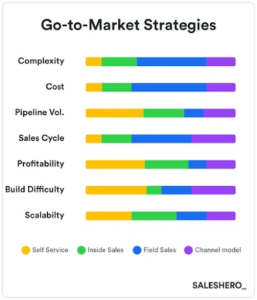What’s in this article:
- To foster lasting relationships, marketers should view short-term exchanges in the context of the long-term customer experience.
- Striking the right balance between efficient service while supporting long-term customer experiences is the key to customer satisfaction.
Customer relationships are not the same as personal relationships, but they do require effort and communication to maintain. For that reason, it’s vital that marketers never take that relationship for granted. Even small interactions matter. To foster lasting relationships, marketers should view short-term exchanges in the context of the long-term customer experience.
Become the best CRMer you can:
CRM Hack: Monitoring the User’s Heartbeat
What Does It Mean to Treat a Customer’s Email With Respect?
To Lock or Not to Lock Customers (into CRM Journeys)
What the Efforts to Promote Responsible Gaming Look Like Form the Inside
The pitfalls of short-term customer service
During a short-term customer interaction, companies often try to solve whatever the customer’s need is right now, regardless of what they’ve done in the past or are likely to do in the future. The benefit of this approach is speed and efficiency — support reps are unlikely to waste time reviewing detailed account histories or attempting an upsell.
Such laser focus can lead to very positive interactions. In fact, nearly 90% of consumers say an “immediate” response from support is important to them, so speed matters. However, keep in mind these short-term interactions are still part of a customer’s overall experience.
If someone needs to keep contacting your support desk to deal with the same problem over and over, it won’t matter if those individual experiences are efficient. Brands should balance efficiency with other considerations, including long-term satisfaction and customer loyalty. To achieve this, service teams need to shift their mindsets and adopt built-for-purpose relationship management tools.

Accounting for the long-term customer experience
Building long-term customer relationships requires careful attention to all steps of the buyer’s journey. Every purchase, customer service call, tech support interaction, or marketing email is another moment in your relationship with that customer. It’s vital to be aware of the cumulative effect each experience is creating. It doesn’t matter if someone had a wonderful purchasing experience if their call to tech support was a disaster.
Long-term customer relationships take effort and resources to maintain but have a clear financial benefit. The cost of acquiring a new customer has risen nearly 50% in the past five years. Keeping the customers that you already have is more profitable than attracting new ones.
To provide the best ongoing experience for your customer, step back and examine every aspect of your business. Your customer support team needs to have quick access to historical and contextual data for every account. You should also be collecting feedback from consumers to understand their pain points when it comes to interacting with your systems. Consider adding a loyalty program or other reward system to show your appreciation for returning business.
Perhaps the most important benefit of investing in long-term customer relationships is consistency. Taking a long view will allow you to adopt systems and policies that lend consistency to your short-term interactions. Consumers are spoiled for choice when it comes to buying options, and they want to feel secure when they spend their money. They trust their own experiences and those of their friends and family. If you’re delivering positive short-term interactions over and over, you’ll earn a strong reputation for reliability.
The most successful businesses will invest in efficient service while supporting long-term customer experiences. Striking the right balance between the two is the key to customer satisfaction. A five-minute call today may be the reason you’re still earning someone’s business five years later.
The post Going Steady: Does Short-Term Service Lead to a Positive Long-Term Experience? appeared first on Post Funnel.



